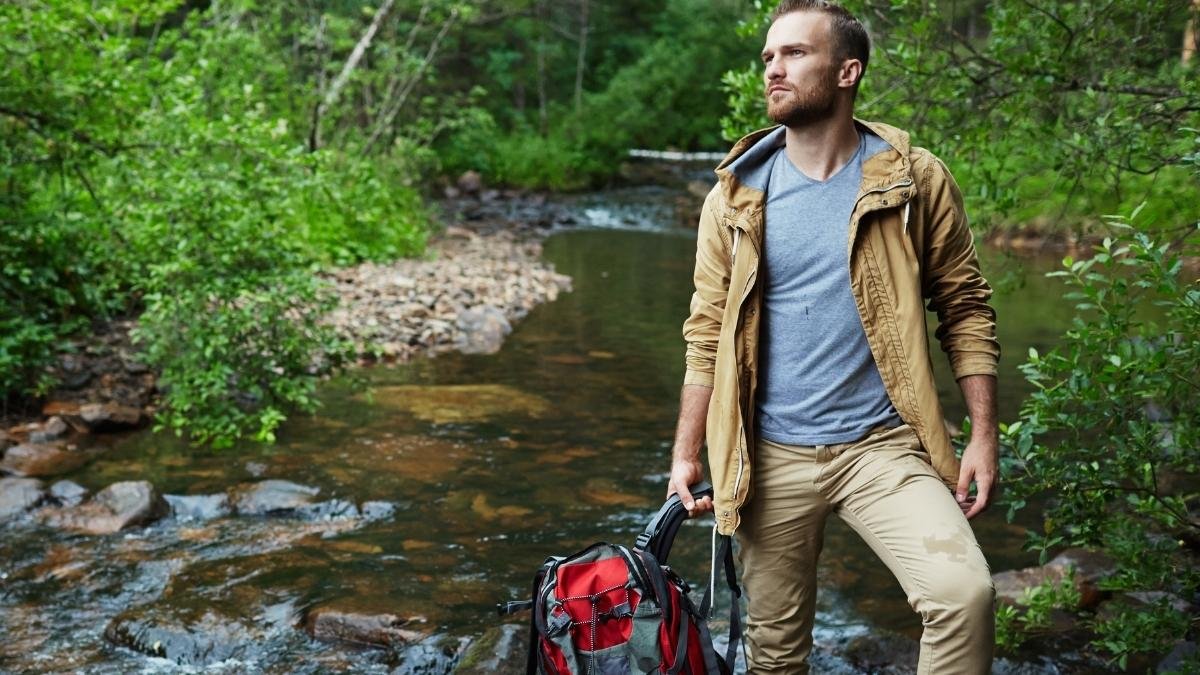That iconic photo of a lone hiker on a majestic peak doesn’t show the hour-long traffic jam at the park gate or the shuttle bus queue that snakes through the parking lot.
The dream of quiet contemplation in America’s national parks is met with the reality of trailhead parking lots that are full by 7 a.m. and famous trails that feel more like crowded shopping malls. This experience is a battle against logistics, not a peaceful escape into nature.
This guide offers the antidote. We identify the eleven most frustratingly crowded national parks and provide an expert-backed alternative for each.
These “Ranger’s Picks” deliver the same epic landscapes and profound beauty you’re searching for, just without the soul-crushing crowds. It is time to trade the congestion for genuine connection.
1. Zion National Park
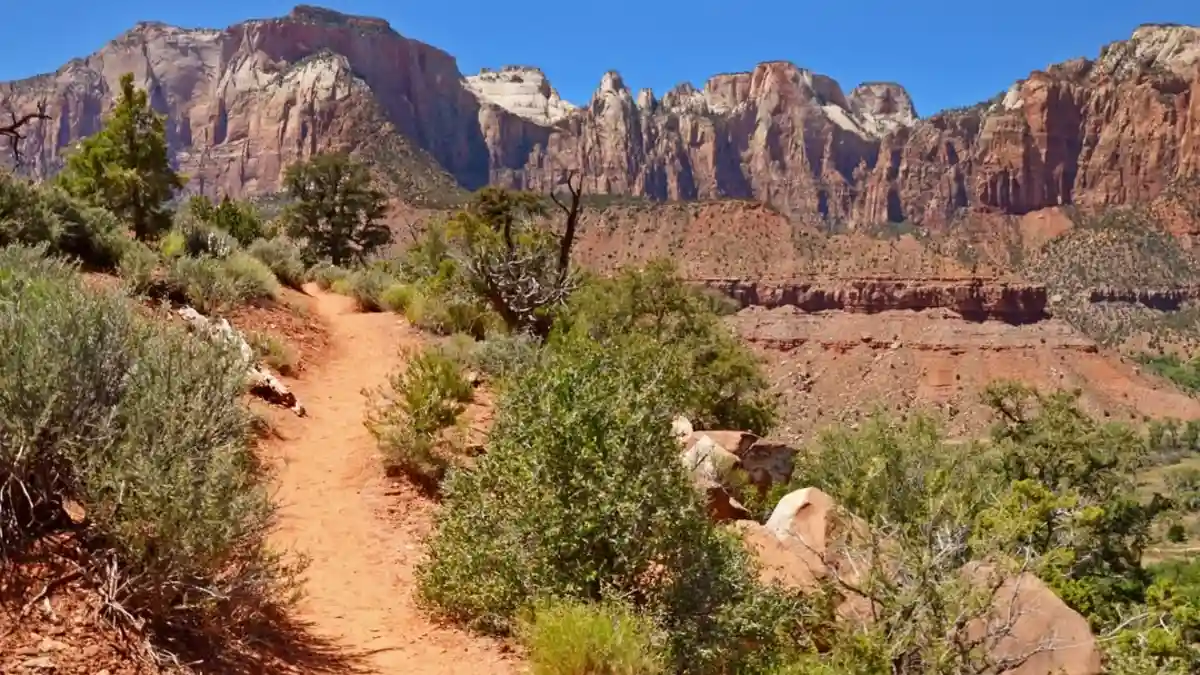
The staggering beauty of Zion National Park is undeniable, but its immense popularity has transformed a natural sanctuary into a complex logistical challenge.
With nearly 5 million annual visitors (4.94 million in 2024) funneled into its narrow main canyon, the experience can be defined more by queues than by quiet contemplation.
The primary issue is the mandatory shuttle system. Initially implemented to reduce traffic, it has paradoxically enabled a “dramatic increase in visitors,” creating its own form of congestion.
Visitors report massive queues, with some describing waits of over an hour just to board a bus and anecdotal accounts of lines appearing to contain tens of thousands of people on peak mornings.
This leads to frustration before the day’s adventure has even begun.
Once on the trails, the crowding continues. Iconic hikes like The Narrows and Angels Landing are frequently described by visitors as “unbearable,” with the atmosphere of a “crowded shopping mall” rather than a wilderness trail.
Spontaneity is further diminished by the lottery-based permit system now required for the Angels Landing hike.
Compounding these issues is the near-impossibility of parking; the main visitor center lot is often full before 7:30 a.m., forcing visitors into a secondary shuttle system from paid lots in the town of Springdale.
Ranger’s Pick: Canyonlands National Park
As Utah’s least-visited national park, Canyonlands offers vast, dramatic canyon vistas that rival Zion’s but without the oppressive crowds.
The fundamental difference lies in visitor density. Zion concentrates its nearly 5 million visitors into the 15-mile-long Zion Canyon. In contrast, Canyonlands disperses its approximately 900,000 annual visitors across three massive, distinct districts: Island in the Sky, The Needles, and The Maze.
This geographical layout naturally prevents the kind of bottlenecks that plague Zion, making solitude an achievable goal.
Actionable Advice for 2025: For first-time visitors, the Island in the Sky district is the most accessible. The paved scenic drive offers jaw-dropping views from overlooks like Grand View Point and Green River Overlook.
The iconic photo opportunity at Mesa Arch is best captured at sunrise to avoid even the modest crowds that gather there. For an easy hike with immense rewards, the Grand View Point Trail provides an epic rim walk suitable for most fitness levels.
Deeper Cut: Snow Canyon State Park
For travelers based near St. George or with limited time, Snow Canyon State Park serves as an excellent “Zion-in-miniature.”
It features similar red rock cliffs, petrified sand dunes, and explorable slot canyons but with a tiny fraction of the visitors, offering a taste of the region’s geology without the logistical headaches.
| Metric | The “Tourist Trap”: Zion NP | The “Ranger’s Pick”: Canyonlands NP |
| 2024 Annual Visitors | ~4.9 Million | ~900,000 |
| 2025 Reservation Needed? | Yes (Angels Landing Lottery) | No |
| Peak Season Pain Point | Hour-long shuttle queues | Full parking at Mesa Arch at sunrise |
| Signature Experience | Hiking The Narrows shoulder-to-shoulder | Expansive, quiet canyon views |
2. Yellowstone National Park
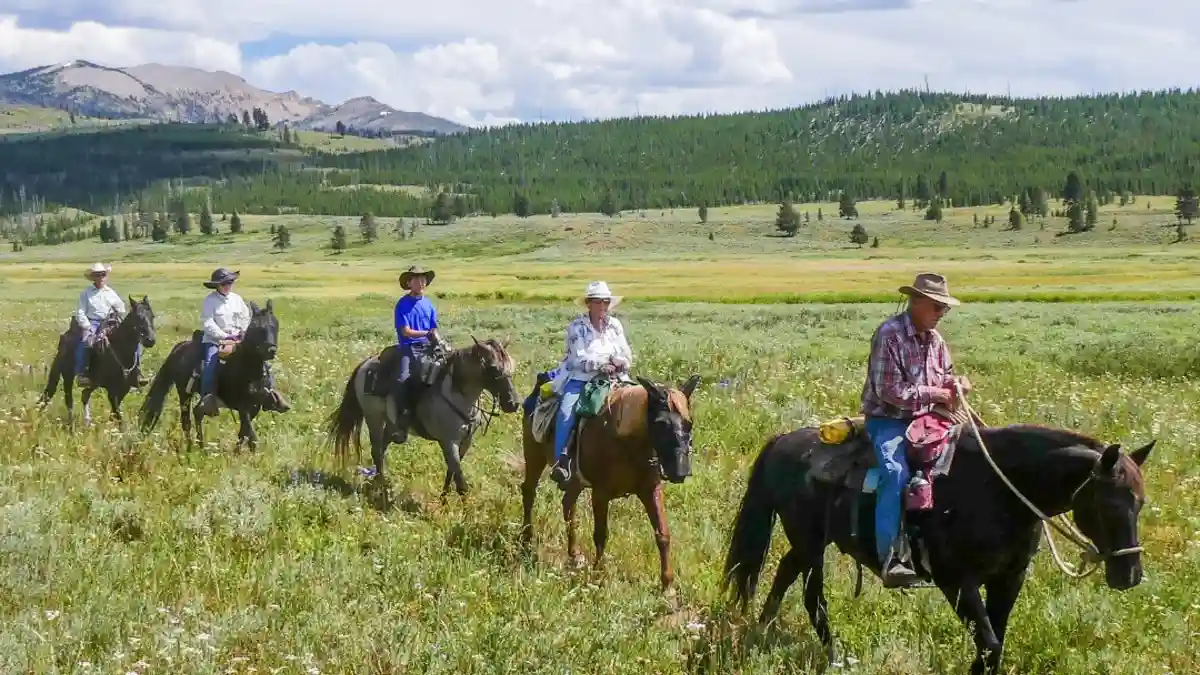
Yellowstone is a cornerstone of the American identity, but for its 4.74 million annual visitors, the primary experience is often one of traffic gridlock. The park’s vastness is frequently overshadowed by the sheer volume of vehicles navigating its roads.
The “nightmare” begins at the entrance gates. During peak summer months, the line at the popular West Entrance can stretch for a mile back into town, resulting in waits of over an hour, particularly for those arriving after 9 a.m.. Once inside, the park’s famous “animal jams” become a major source of frustration.
While seeing a bison or bear is a thrill, the resulting traffic stoppages can cause delays of 15 to 30 minutes or more, completely derailing a planned itinerary.
Social media and forums are replete with visitor complaints about drivers stopping in the middle of the road, creating dangerous situations and blocking traffic for everyone else.
This is compounded by parking chaos at major attractions like Old Faithful and Grand Prismatic Spring, where lots are often full, leading to cars parked precariously along narrow road shoulders.
Ranger’s Pick: Grand Teton National Park
Located just south of Yellowstone, Grand Teton National Park offers an immediate and effective antidote to the traffic woes.
It boasts equally dramatic mountain scenery and abundant wildlife but is structured to encourage a more active and dispersed visitor experience. Yellowstone’s figure-eight road layout funnels millions of cars through a limited number of corridors, promoting a passive, drive-by style of tourism that is the root cause of its congestion.
In contrast, Grand Teton’s more linear road system, with its numerous pull-offs and trailheads, invites visitors to get out of their cars for activities like hiking, kayaking, and photography.
This fundamental difference shifts the focus from sitting in traffic to actively engaging with the landscape.
Actionable Advice for 2025: Drive the scenic Teton Park Road, stopping at turnouts for breathtaking views of the Teton Range. The easy but spectacular hike around Jenny Lake is a must-do, as is the short walk to the historic Mormon Row barns for iconic photographs. For reliable wildlife viewing, moose are frequently spotted along the less-traveled Moose-Wilson Road.
Deeper Cut: Custer State Park, South Dakota
For visitors whose primary motivation is to see sprawling herds of bison, South Dakota’s Custer State Park is an exceptional alternative.
The 18-mile Wildlife Loop Road offers opportunities to see massive bison herds that “rival those found in Yellowstone,” but within a more manageable and less congested environment.24
| Metric | The “Tourist Trap”: Yellowstone NP | The “Ranger’s Pick”: Grand Teton NP |
| 2024 Annual Visitors | ~4.7 Million | ~3.6 Million |
| 2025 Reservation Needed? | No (but expect severe congestion) | No |
| Peak Season Pain Point | “Animal Jams” causing 30+ min delays | Full parking at Jenny Lake by mid-morning |
| Signature Experience | Viewing geysers from a crowded boardwalk | Hiking beneath jagged, iconic peaks |
3. Grand Canyon National Park
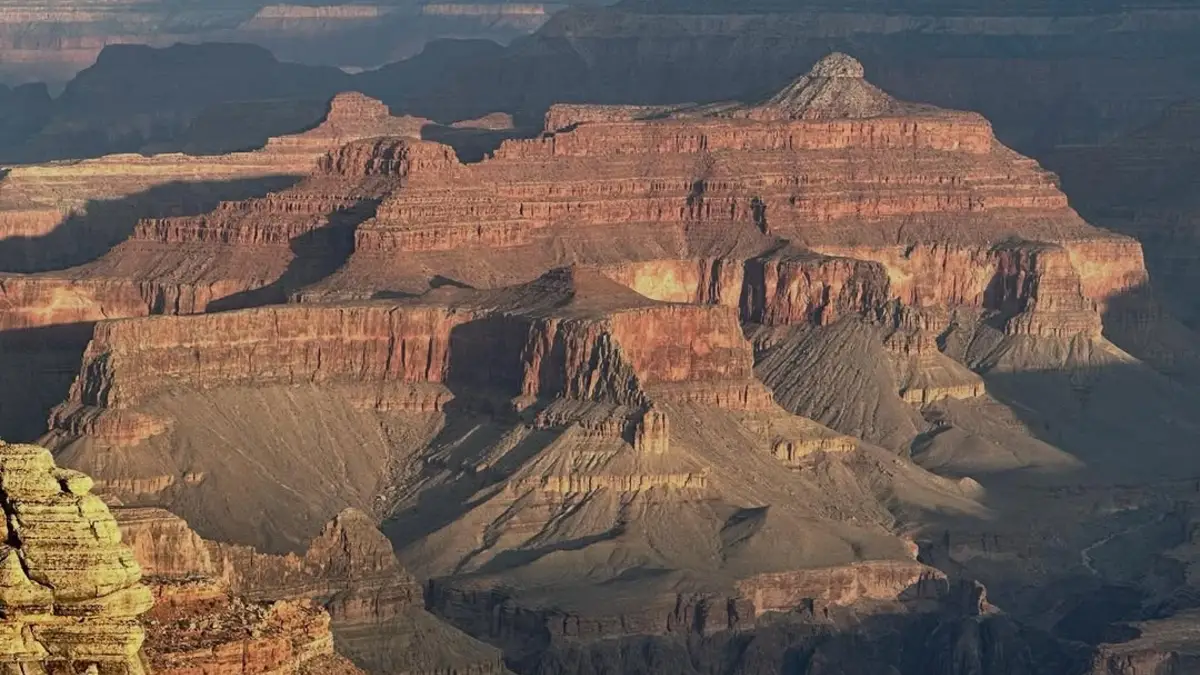
The Grand Canyon is a global icon, yet the vast majority of its visitors experience only a tiny, congested fraction of it.
A staggering 90% of the park’s nearly 5 million annual visitors flock to the easily accessible South Rim, creating crowds that can detract from the sublime landscape. The park’s total visitation in 2024 was 4.91 million.
The congestion is most acute at the South Entrance, where wait times during peak season (spring break, summer, and fall weekends) can range from 45 minutes to two hours between 10 a.m. and 4 p.m.
Parking is another significant challenge, with the lots near the main Visitor Center and Mather Point often filling completely by noon, forcing a reliance on the park’s shuttle bus system.
Most importantly, the famous viewpoints along the rim, especially those within a short walk of a parking lot, are perpetually crowded, making it difficult to find a quiet moment for reflection or to capture an unobstructed photograph.
Ranger’s Pick: The Grand Canyon North Rim
The most effective way to escape the crowds is not to visit a different park, but to experience a different side of the same one.
The North Rim offers a completely distinct experience defined by solitude, cooler temperatures due to its higher elevation, and a more rugged, forested environment. The very factors that make it less accessible are what preserve its tranquility.
The North Rim is a significantly longer drive from major hubs like Phoenix and Las Vegas and is only open seasonally (typically mid-May to mid-October), which naturally filters out the large bus tours and casual day-trippers.
This “effort barrier” ensures that those who make the journey are rewarded with a more peaceful and immersive visit.
Actionable Advice for 2025: Take the stunning scenic drive out to Point Imperial, the highest viewpoint in the park, and Cape Royal, which offers panoramic vistas.
For an easy and accessible taste of the North Rim’s beauty, the paved Bright Angel Point Trail near the historic Grand Canyon Lodge provides spectacular views with minimal effort.
The North Rim is particularly renowned for its peaceful sunset experiences, a stark contrast to the bustling South Rim.
| Metric | The “Tourist Trap”: Grand Canyon South Rim | The “Ranger’s Pick”: Grand Canyon North Rim |
| Annual Visitors | ~4.5 Million (90% of total) 26 | ~500,000 (10% of total) |
| 2025 Reservation Needed? | No (but expect 1-2 hour entry waits) | No |
| Peak Season Pain Point | Overcrowded viewpoints and full parking lots | Limited lodging and services book up far in advance |
| Signature Experience | Viewing the canyon from a crowded overlook | Peaceful sunsets and a sense of solitude |
4. Rocky Mountain National Park
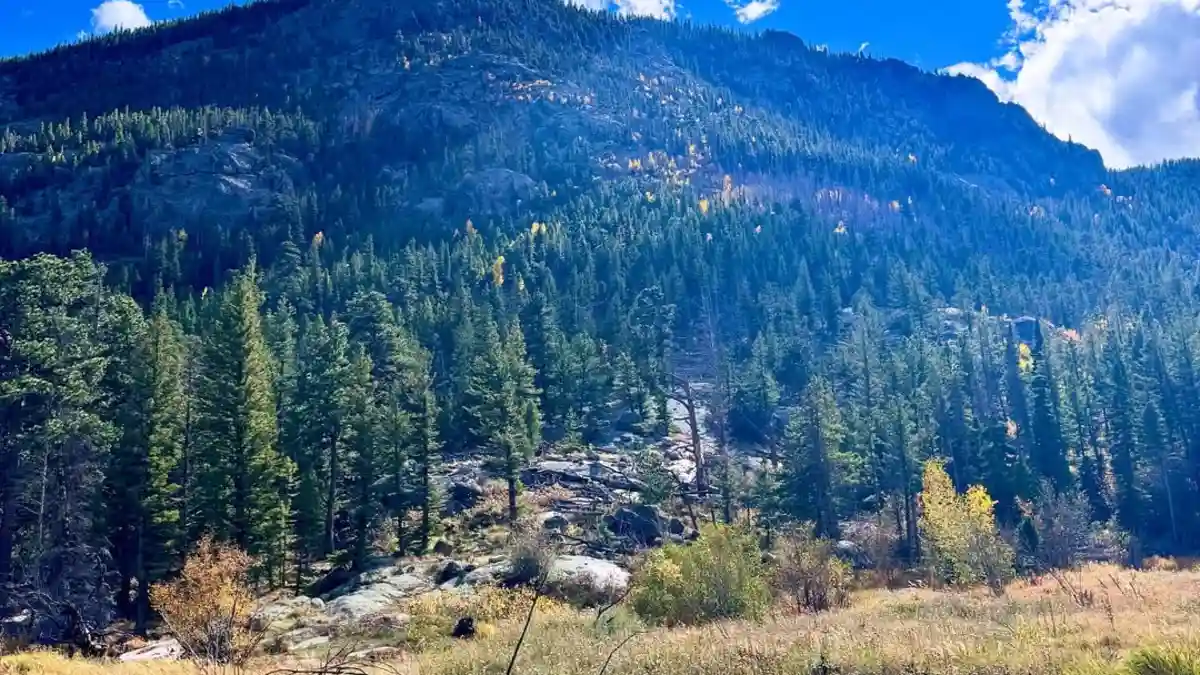
Rocky Mountain National Park’s proximity to major population centers like Denver has made it one of the nation’s most visited parks, with 4.15 million visitors in 2024.
This immense popularity, particularly a 42% increase in visitation in the decade leading up to 2019, has led to significant congestion and management challenges that can detract from the visitor experience.
The clearest evidence of this strain is the park’s permanent timed-entry reservation system, which is now required for access from mid-May to mid-October.
This system, which requires separate permits for the hyper-popular Bear Lake Road corridor and the rest of the park, eliminates spontaneous visits during the peak season.
Even with reservations, parking remains a major issue. Trailhead lots for popular destinations like Bear Lake and Glacier Gorge fill exceptionally early, with visitor reports indicating the Bear Lake lot can be full by 7:45 a.m., forcing visitors onto the Park & Ride shuttle system.
The result is an experience that often requires more logistical planning than wilderness immersion.
Ranger’s Pick: North Cascades National Park, Washington
For an authentic alpine experience that mirrors the grandeur of the Rockies without the crowds, North Cascades National Park is an unparalleled alternative. It boasts similar dramatic landscapes of towering, glaciated peaks and turquoise alpine lakes but receives only a tiny fraction of the visitors.
The disparity is staggering: North Cascades saw only around 16,500 visitors in 2024, compared to RMNP’s 4.15 million.
This vast difference is largely a matter of brand recognition and accessibility. RMNP is a household name, while North Cascades remains a hidden gem. This allows visitors to experience a similar environment with a profound sense of solitude.
Actionable Advice for 2025: The scenic North Cascades Highway (State Route 20) offers views that rival RMNP’s famous Trail Ridge Road and is typically fully open from July to September.
A stop at the Diablo Lake Vista Point to see its iconic, unnaturally turquoise water is mandatory. For hikers, the Thunder Knob Trail offers a relatively easy climb to panoramic views, while the more strenuous Cascade Pass Trail is considered one of the premier hikes in the entire state.
| Metric | The “Tourist Trap”: Rocky Mountain NP | The “Ranger’s Pick”: North Cascades NP |
| 2024 Annual Visitors | ~4.15 Million | ~16,500 |
| 2025 Reservation Needed? | Yes (Timed-entry, May-Oct) | No |
| Peak Season Pain Point | Bear Lake parking full by 7:45 a.m. | High-elevation trails may be snow-covered until July |
| Signature Experience | Navigating shuttle buses and crowded trails | Solitude among 300+ glaciers and jagged peaks |
5. Arches National Park
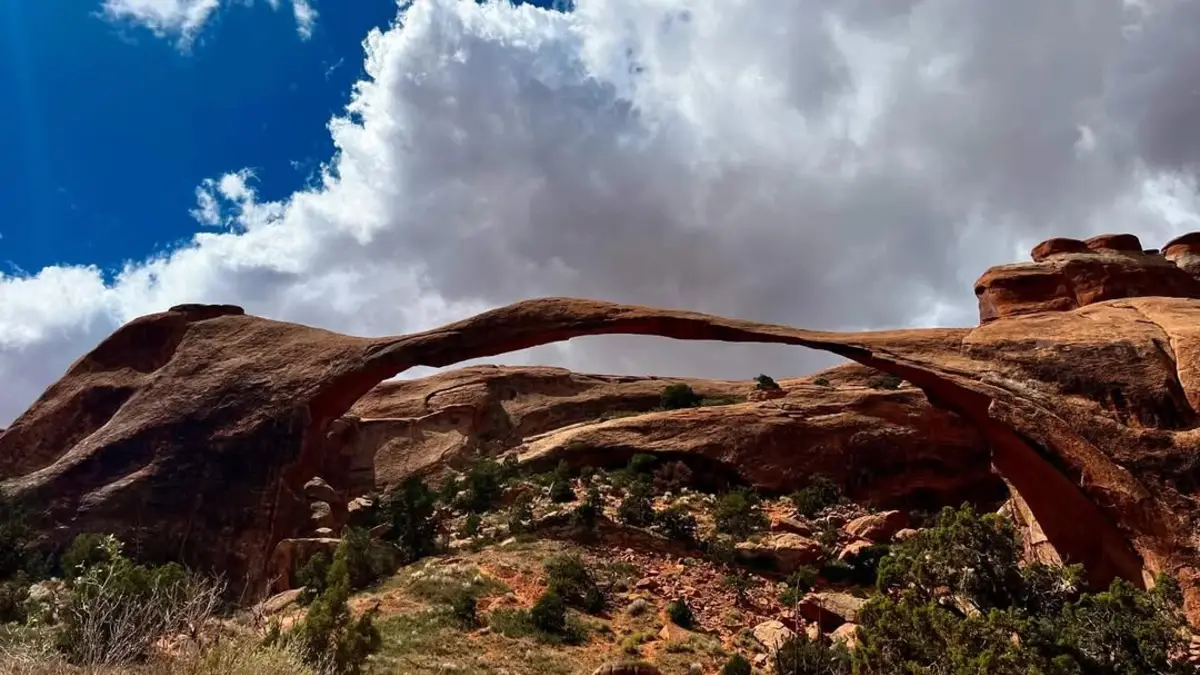
The otherworldly landscape of Arches National Park, with its more than 2,000 natural stone arches, has made it a bucket-list destination.
However, the park’s relatively compact size and immense popularity create intense congestion, particularly at its most famous landmarks.
To manage the crush of visitors, Arches has implemented a timed-entry ticket system, required for entry between 7 a.m. and 4 p.m. from April through October.
While this helps pace visitation, it removes any semblance of spontaneity and does not eliminate crowding within the park.
Trailhead parking lots for popular areas like The Windows, Devils Garden, and Delicate Arch can still be full by 7:30 a.m. during summer months.
The hike to Delicate Arch, the park’s most iconic feature, is notoriously crowded.
At sunset, it’s not uncommon for hundreds of people to gather in the bowl surrounding the arch, with a long line forming for the obligatory photo underneath it, transforming a moment of natural wonder into a social event.
Ranger’s Pick: Canyonlands National Park (Island in the Sky)
Located just a 30-minute drive from Arches, the Island in the Sky district of Canyonlands National Park offers a perfect alternative.
Instead of focusing on singular rock formations, Canyonlands presents a landscape of incomprehensible scale, with vast canyons carved by the Colorado and Green Rivers.
Many visitors make the mistake of trying to “do” both parks in a single weekend, which leads them to only the most crowded, easily accessible spots.
A more rewarding approach is to dedicate a full day to Canyonlands, allowing for a deeper, more peaceful experience. Instead of a rushed, crowded tour of Arches, a day spent exploring the overlooks and short hikes of Island in the Sky offers a less stressful and arguably more profound connection with the Utah landscape.
Actionable Advice for 2025: Revisit the must-see viewpoints at Island in the Sky: Mesa Arch (at sunrise), Grand View Point, and the Green River Overlook.
For a more adventurous alternative to the crowded Delicate Arch trail, consider the strenuous but spectacular Gooseberry Trail, which descends 1,400 feet from the mesa top into the canyon, guaranteeing true solitude and a unique perspective.16
| Metric | The “Tourist Trap”: Arches NP | The “Ranger’s Pick”: Canyonlands NP |
| Annual Visitors | ~1.5 Million (in a compact area) | ~900,000 (in a vast area) |
| 2025 Reservation Needed? | Yes (Timed-entry, Apr-Oct) | No |
| Peak Season Pain Point | Crowds and photo lines at Delicate Arch | Limited services within the park |
| Signature Experience | Viewing iconic arches among crowds | Contemplating vast, empty canyons in silence |
6. Yosemite National Park
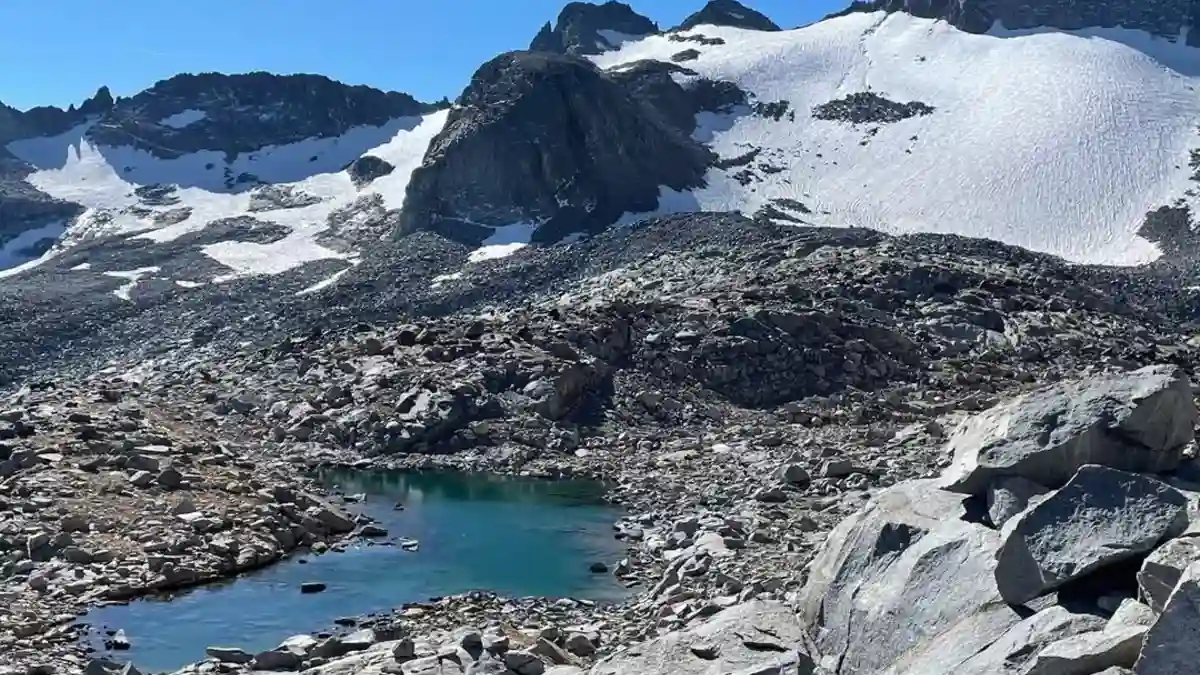
Yosemite National Park is the crown jewel of the Sierra Nevada, but its world-renowned beauty attracts crowds that can lead to a frustrating experience, particularly in the seven-square-mile Yosemite Valley.
With 4.12 million visitors in 2024, the park grapples with significant traffic congestion, limited parking, and the need for complex reservation systems.
During peak season, a vehicle reservation system is often in effect, requiring visitors to book a slot months in advance simply to enter the park between certain hours.
Even with a reservation, traffic on the valley floor can be severe, and finding a parking spot can feel like a competitive sport. This congestion not only adds stress but also consumes valuable time that could be spent enjoying the park’s wonders.
The experience of seeing iconic sights like Yosemite Falls or El Capitan is often filtered through a windshield or shared with thousands of other people on crowded paths and shuttle buses.
Ranger’s Pick: Sequoia & Kings Canyon National Parks
Located south of Yosemite in the same Sierra Nevada range, the jointly managed Sequoia and Kings Canyon National Parks offer a similar landscape of granite domes, deep canyons, and alpine meadows, but with a key addition: groves of the world’s largest trees.
Crucially, these parks are significantly less crowded than their famous northern neighbor.
While Yosemite sees over 4 million visitors, Kings Canyon received just under 700,000 in 2024. This disparity allows for a more tranquil and immersive High Sierra experience.
The parks provide the grandeur of Yosemite’s landscape with the added awe of the giant sequoias, all without the intense logistical planning and gridlock.
Actionable Advice for 2025: In Sequoia, walk the easy, paved Big Trees Trail for an accessible introduction to a stunning sequoia grove, which is often less crowded than the more famous General Sherman Tree area.
For a breathtaking view, climb the 350-plus steps carved into Moro Rock for a panoramic vista of the Great Western Divide. In Kings Canyon, drive the scenic byway deep into the canyon to Roads End and hike along the peaceful Kings River.
| Metric | The “Tourist Trap”: Yosemite NP | The “Ranger’s Pick”: Sequoia & Kings Canyon NPs |
| 2024 Annual Visitors | ~4.1 Million | ~1.3 Million (Combined, estimated from ) |
| 2025 Reservation Needed? | Yes (Vehicle reservations on peak dates) | No |
| Peak Season Pain Point | Severe traffic congestion on Valley Floor | Winding roads can mean slow travel times |
| Signature Experience | Viewing granite icons from a crowded valley | Walking in solitude among the world’s largest trees |
7. Glacier National Park
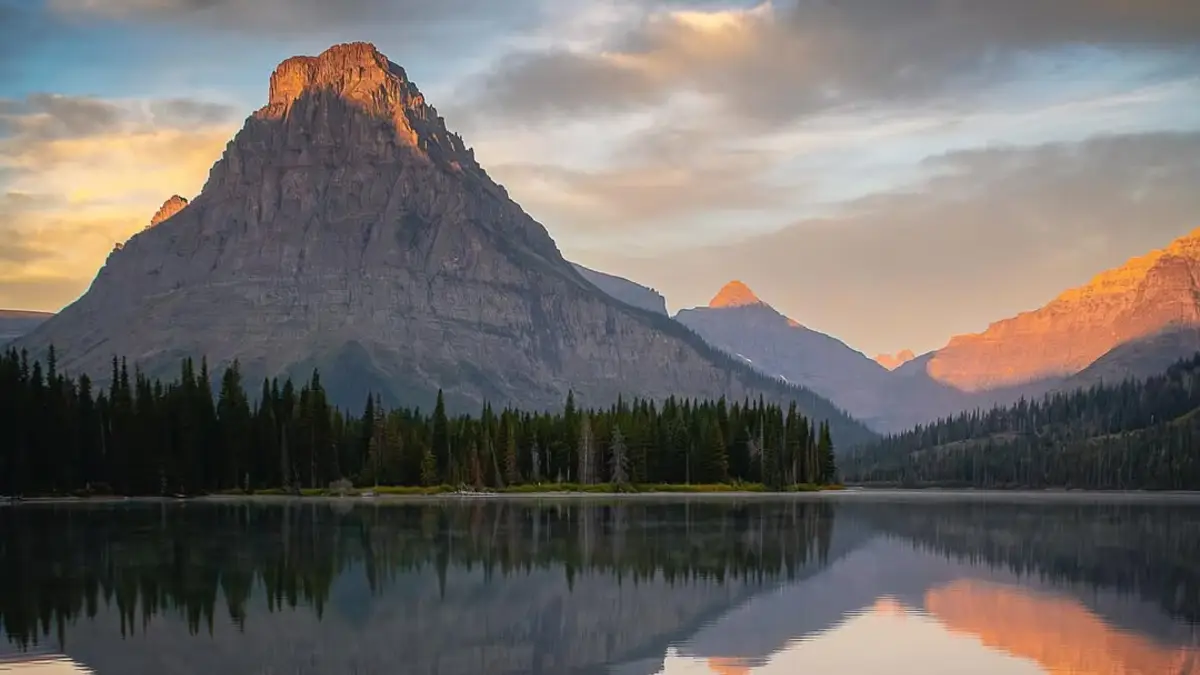
Glacier National Park’s epic alpine scenery and its signature roadway, the Going-to-the-Sun Road, attract over 3 million visitors a year, leading to significant congestion in its most popular areas.
The park’s popularity has necessitated a vehicle reservation system for access to the Going-to-the-Sun Road and the North Fork area during the peak summer season.
This means that a spontaneous drive on one of America’s most scenic roads is no longer possible for most visitors. Even with a reservation, the parking lot at Logan Pass, the road’s summit, is typically full between 9:30 a.m. and 4:00 p.e., causing delays and frustration.
Popular trails can be heavily trafficked, diminishing the sense of wildness the park is known for.
Ranger’s Pick: Great Basin National Park, Nevada
For those seeking dramatic mountain scenery, ancient trees, and remarkable solitude, Nevada’s Great Basin National Park is a hidden gem.
This park protects the 13,063-foot Wheeler Peak, groves of ancient bristlecone pines (some of the oldest living organisms on Earth), and stunning alpine landscapes that provide a similar feel to Glacier but with a tiny fraction of the visitors.
In 2024, Great Basin received just 152,068 visits, compared to Glacier’s 3.2 million. This vast difference in visitation ensures a peaceful experience where visitors can connect with a rugged, high-altitude environment without competing for parking or trail space.
Actionable Advice for 2025: Drive the 12-mile Wheeler Peak Scenic Drive, which climbs over 4,000 feet into the alpine zone.
Take a ranger-led tour of the magnificent Lehman Caves, a highly decorated limestone cavern that offers a unique underground adventure.
For a truly memorable hike, walk the Bristlecone Trail to see the ancient, gnarled trees, and continue on to the Alpine Lakes Loop Trail to see two pristine mountain lakes set against the backdrop of Wheeler Peak.
| Metric | The “Tourist Trap”: Glacier NP | The “Ranger’s Pick”: Great Basin NP |
| 2024 Annual Visitors | ~3.2 Million | ~152,000 |
| 2025 Reservation Needed? | Yes (for Going-to-the-Sun Road, Jun-Sep) | No (Cave tours recommended) |
| Peak Season Pain Point | Logan Pass parking lot full all day | Remote location requires dedicated travel time |
| Signature Experience | Driving a congested but scenic mountain road | Stargazing under some of the darkest skies in the U.S. |
8. Acadia National Park
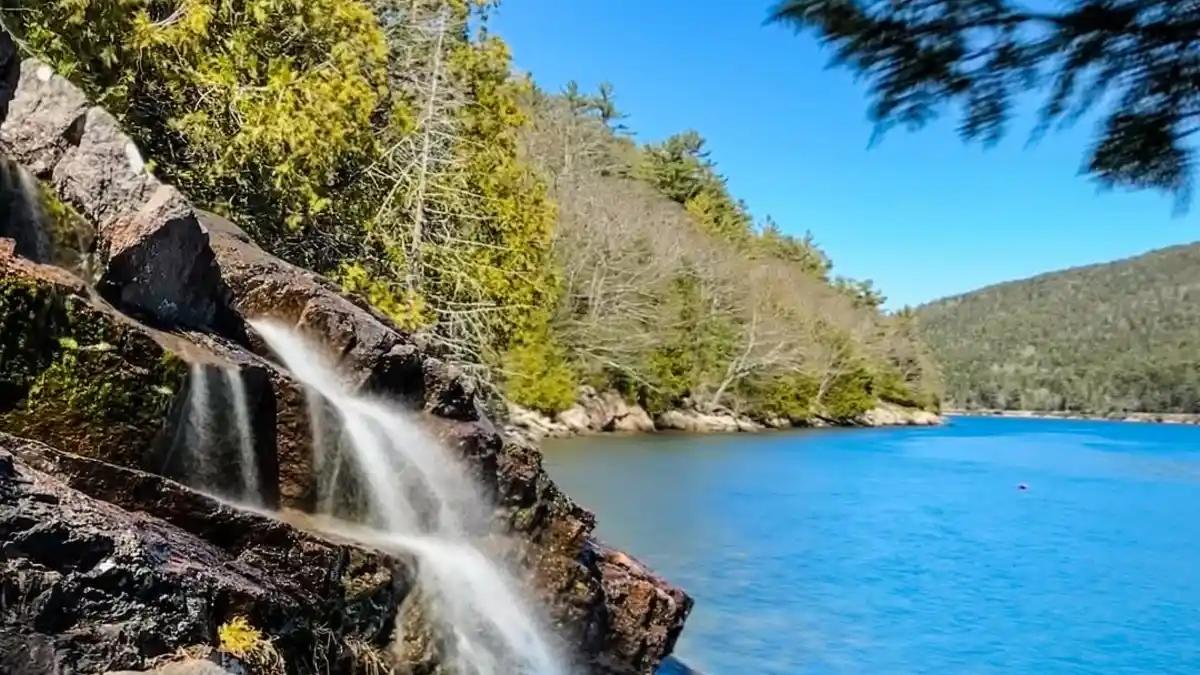
As one of the most popular parks in the nation, Acadia receives nearly 4 million visitors annually, concentrated in a relatively small area on Maine’s Mount Desert Island. This high visitation leads to significant congestion, particularly at its most iconic spots.
The most sought-after experience—watching the sunrise from Cadillac Mountain, the highest point on the North Atlantic seaboard—now requires a vehicle reservation from late May through October.
These reservations, for both sunrise and daytime slots, are limited and book up quickly, removing spontaneity. Even beyond Cadillac, parking lots at popular destinations like Jordan Pond House and Sand Beach are often full during peak hours, forcing visitors to circle endlessly or change plans on the fly.
The park’s popular carriage roads and hiking trails can also feel crowded, detracting from the peaceful coastal atmosphere.
Ranger’s Pick: Isle Royale National Park, Michigan
For a truly crowd-free, rugged coastal experience, Isle Royale National Park is an exceptional choice. Located in the remote waters of Lake Superior, it is one of the least-visited national parks in the system, receiving just 28,806 visitors in 2024.
The park’s isolation is its greatest asset for those seeking solitude; it is accessible only by ferry or seaplane, and no wheeled vehicles are allowed on the island.
This effort-intensive access ensures that the park remains a sanctuary for wilderness lovers.
It offers a similar landscape of rugged shorelines, dense forests, and abundant wildlife (including a famous population of moose and wolves) to Acadia, but with a profound sense of peace and isolation.
Actionable Advice for 2025: The park is only open from April 16 to October 31. Plan a multi-day trip, as day trips are not feasible. Base operations out of Houghton or Copper Harbor in Michigan, or Grand Portage in Minnesota.
Once on the island, explore via its extensive network of hiking trails. A popular option is to hike a section of the 40-mile Greenstone Ridge Trail, which runs the length of the island’s spine and offers incredible views of Lake Superior.
Kayaking along the island’s protected coves is another premier way to experience its wild beauty.
| Metric | The “Tourist Trap”: Acadia NP | The “Ranger’s Pick”: Isle Royale NP |
| 2024 Annual Visitors | ~3.96 Million | ~28,800 |
| 2025 Reservation Needed? | Yes (for Cadillac Summit Road, May-Oct) | No (Ferry/seaplane reservations are essential) |
| Peak Season Pain Point | Limited parking and traffic on Park Loop Road | Requires significant planning and is inaccessible in winter |
| Signature Experience | Competing for a spot to watch sunrise on Cadillac Mtn. | Hearing a wolf howl in a truly remote wilderness |
9. Great Smoky Mountains National Park
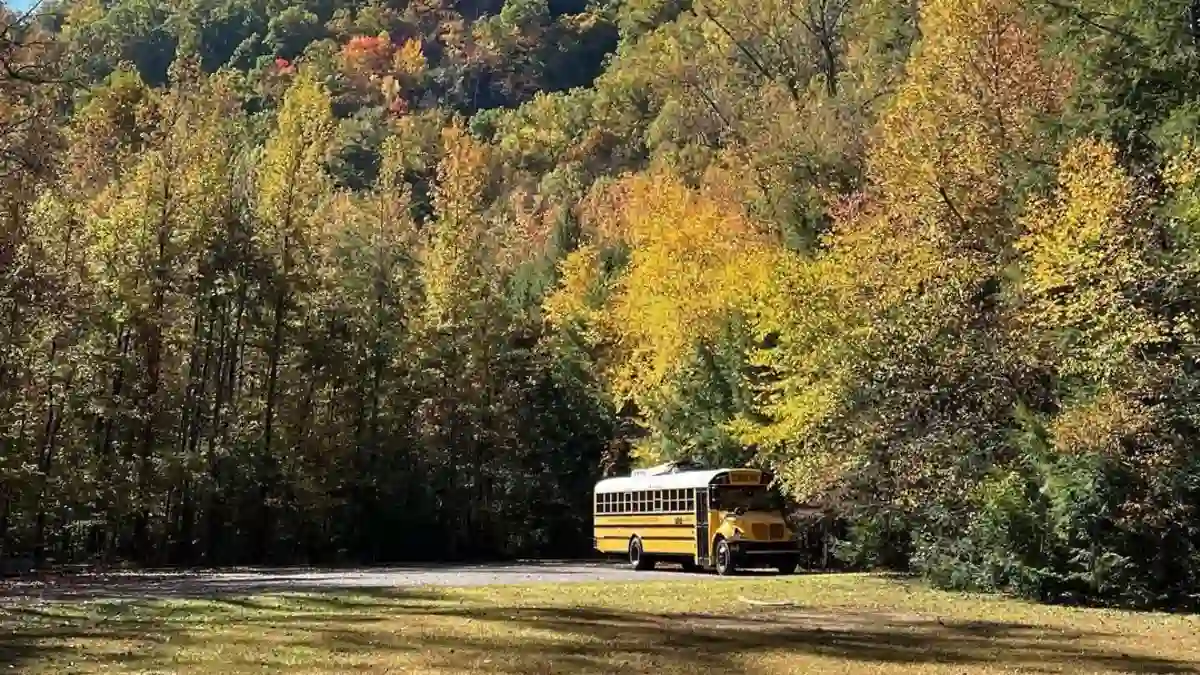
Year after year, Great Smoky Mountains National Park holds the title of the most-visited national park in the United States, with a staggering 12.19 million recreation visits in 2024.
This immense volume of visitors creates predictable and often frustrating bottlenecks, especially in popular areas like Cades Cove and along the Newfound Gap Road.
The 11-mile, one-way Cades Cove Loop Road is notorious for its “bear jams” and stop-and-go traffic, where the drive can take several hours on a busy day.
While the valley is beautiful, the experience is often one of idling in a long line of cars rather than immersing oneself in nature.
Similarly, the main arteries of the park can be heavily congested, and popular trailheads like Laurel Falls and Alum Cave Bluffs often have overflowing parking lots, with cars lined up along the road shoulders for long distances.
Ranger’s Pick: New River Gorge National Park & Preserve, West Virginia
For those seeking the lush, mountainous beauty of the Appalachians without the extreme crowds, New River Gorge National Park and Preserve is a fantastic alternative.
As one of the newest national parks, designated in December 2020, it remains something of a hidden gem.
The park offers a similar landscape of deep river valleys, dense forests, and dramatic overlooks, but with approximately 1.5 million annual visitors—a fraction of the Smokies’ total.
This allows for a more peaceful and less commercialized experience, where the focus is on the rugged landscape and outdoor adventure.
Actionable Advice for 2025: Drive the scenic Fayette Station Road, a winding one-way road that descends to the bottom of the gorge and passes directly under the iconic New River Gorge Bridge.
For stunning views, walk the short, accessible trail at the Canyon Rim Visitor Center or hike the Long Point Trail for a spectacular view of the bridge.
The park is also a world-class destination for whitewater rafting and rock climbing, offering adventure opportunities that are less accessible in the Smokies.
| Metric | The “Tourist Trap”: Great Smoky Mountains NP | The “Ranger’s Pick”: New River Gorge NP |
| 2024 Annual Visitors | ~12.2 Million | ~1.5 Million |
| 2025 Reservation Needed? | No (but “Parking Tag” now required) | No |
| Peak Season Pain Point | Bumper-to-bumper traffic on Cades Cove Loop | Fewer amenities and lodging options inside the park |
| Signature Experience | Sitting in a traffic jam to see a black bear | Whitewater rafting beneath a massive steel arch bridge |
10. Joshua Tree National Park
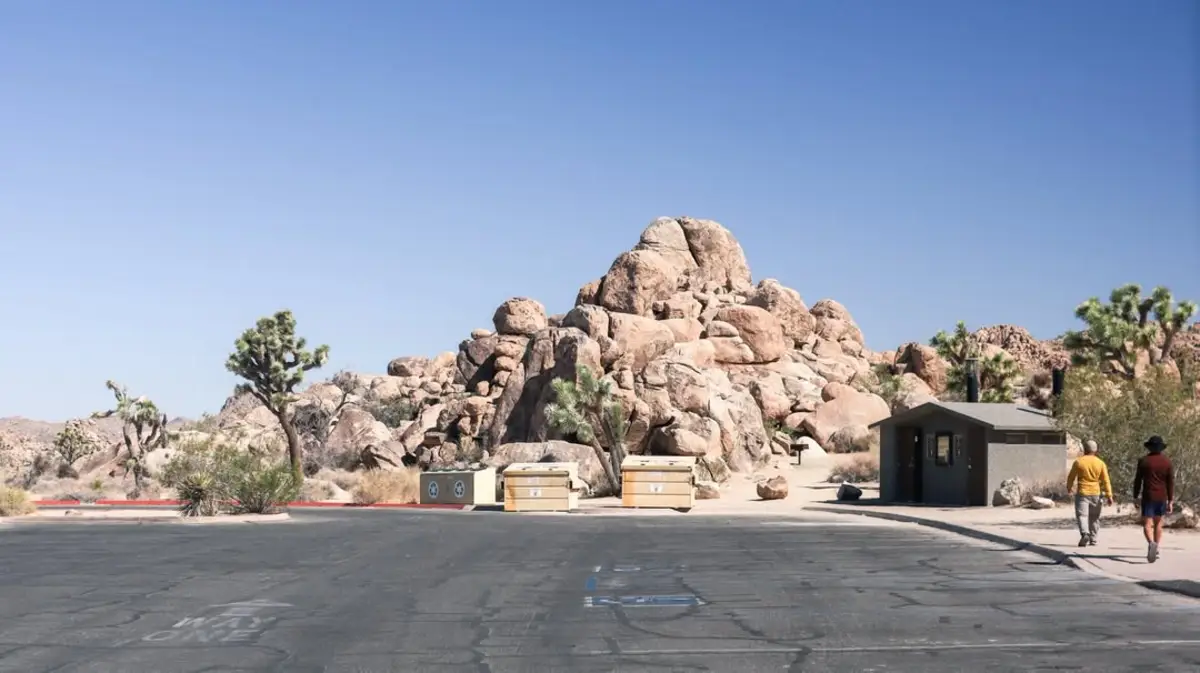
The unique intersection of the Mojave and Colorado deserts has made Joshua Tree National Park a cultural icon and a massively popular destination, attracting over 3 million visitors annually.
This popularity is concentrated in the busy season from October through May, when weekends, holidays, and spring break turn the park into a crowded landscape.
During these peak times, visitors can expect long lines at the entrance stations (especially the West Entrance), traffic congestion, and full parking lots at popular sites like Hidden Valley, Barker Dam, and Skull Rock.
Campgrounds are another major pain point; nearly all reservable sites are booked months in advance, and the handful of first-come, first-served sites often fill by Friday morning, leading to hundreds of disappointed campers.
The experience can feel less like a desert escape and more like a battle for resources.
Ranger’s Pick: Mojave National Preserve, California
For a more authentic and solitary desert experience, Mojave National Preserve is an outstanding choice.
Located between Los Angeles and Las Vegas, the preserve is vast, covering 1.6 million acres, and it actually contains more Joshua trees than its more famous neighbor. Despite its scale and beauty, it sees a fraction of the visitors.
The preserve offers a similar otherworldly desert terrain but without the lines and competition for parking. It’s a place for true exploration and solitude.
Actionable Advice for 2025: To see the densest concentration of Joshua trees, drive the roads around Cima Dome.
For a unique hiking experience, climb the massive Kelso Dunes, the second-largest dune system in California, where the sand is known to “sing” or “boom” under the right conditions.
Explore the lava tube caves and hike the short trail through a forest of cholla cactus at the Hole-in-the-Wall area.
| Metric | The “Tourist Trap”: Joshua Tree NP | The “Ranger’s Pick”: Mojave National Preserve |
| Annual Visitors | ~3 Million | ~700,000 (estimated) |
| 2025 Reservation Needed? | No (but campgrounds are almost always full) | No |
| Peak Season Pain Point | Full campgrounds and parking lots by 9 a.m. | Many roads are unpaved and require a high-clearance vehicle |
| Signature Experience | Scrambling on boulders next to dozens of other people | Hiking massive, empty sand dunes at sunset |
11. Cuyahoga Valley National Park
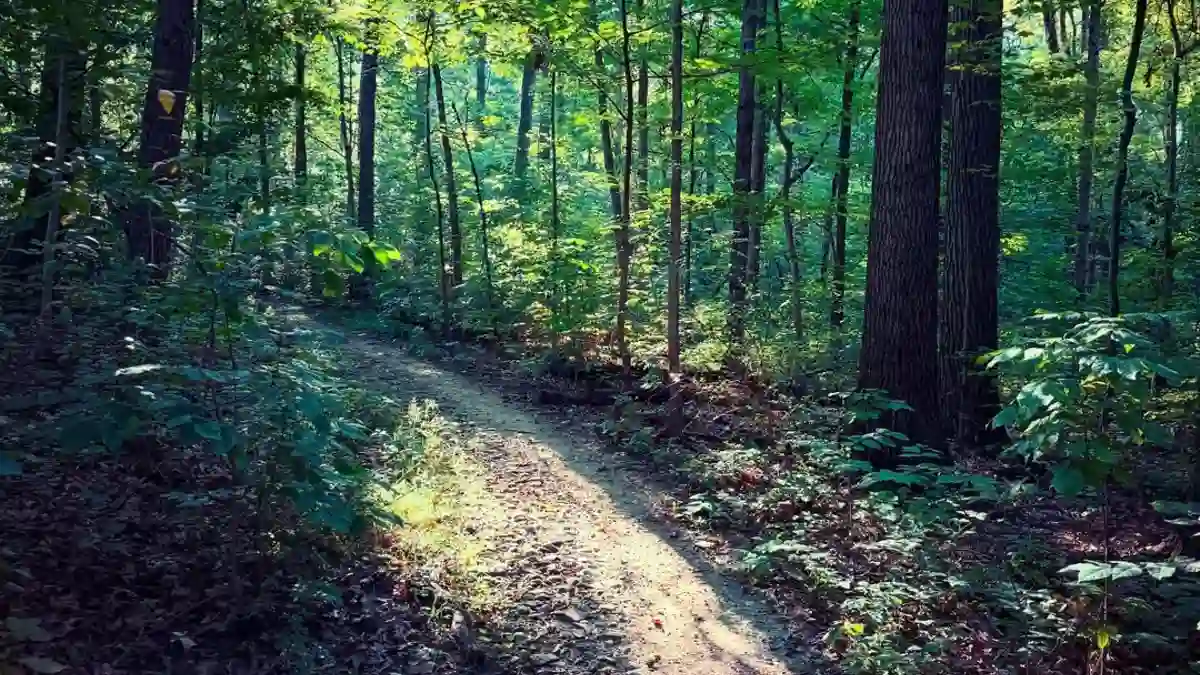
Nestled between Cleveland and Akron, Cuyahoga Valley National Park is unique in its accessibility, which is both a blessing and a curse.
It draws an impressive 2.86 million visitors a year, making it one of the most-visited national parks, but this popularity leads to crowding issues common in more remote parks.
The park’s most popular attractions, such as the 65-foot Brandywine Falls and the Ledges Trail, experience significant congestion. Parking lots at these locations are often full between 10 a.m. and 2 p.m. on nice days, especially on weekends.
The Ohio & Erie Canal Towpath Trail, a major multi-use path through the park, can also become very crowded with hikers and cyclists, particularly in the sections near the Boston Mill Visitor Center.
While beautiful, the park’s proximity to urban centers means the experience can sometimes lack a true sense of wilderness escape.
Ranger’s Pick: Hocking Hills State Park, Ohio
While also very popular (receiving about 2 million visitors annually), Hocking Hills State Park in southeastern Ohio offers a dramatically different and more immersive natural experience.
Unlike Cuyahoga’s gentle, rolling valley, Hocking Hills is defined by stunning Blackhand Sandstone gorges, recessed caves, and numerous waterfalls.
The landscape feels more rugged, wild, and concentrated. While its main trails like Old Man’s Cave can be busy, the park’s more remote feel and greater density of spectacular features provide a more profound sense of “getting away from it all” compared to the urban-adjacent CVNP.
Reddit users and local guides often describe it as “not even close” in terms of scenic beauty and a true retreat from society.
Actionable Advice for 2025: To avoid the biggest crowds, visit on a weekday or during the shoulder seasons (early spring or late fall). Hike the full gorge trail that connects three of the park’s main features: Old Man’s Cave, Cedar Falls, and Ash Cave.
For a less-trafficked but equally stunning hike, visit Conkle’s Hollow State Nature Preserve, which has both a rugged upper rim trail and an accessible lower gorge trail.
| Metric | The “Tourist Trap”: Cuyahoga Valley NP | The “Ranger’s Pick”: Hocking Hills State Park |
| 2024 Annual Visitors | ~2.8 Million | ~2 Million |
| 2025 Reservation Needed? | No | No |
| Peak Season Pain Point | Full parking at Brandywine Falls 10am-2pm | Main trail at Old Man’s Cave can be very crowded |
| Signature Experience | Biking a paved path through a pleasant valley | Hiking through dramatic gorges and behind waterfalls |

